#calipso heartbreak
Text
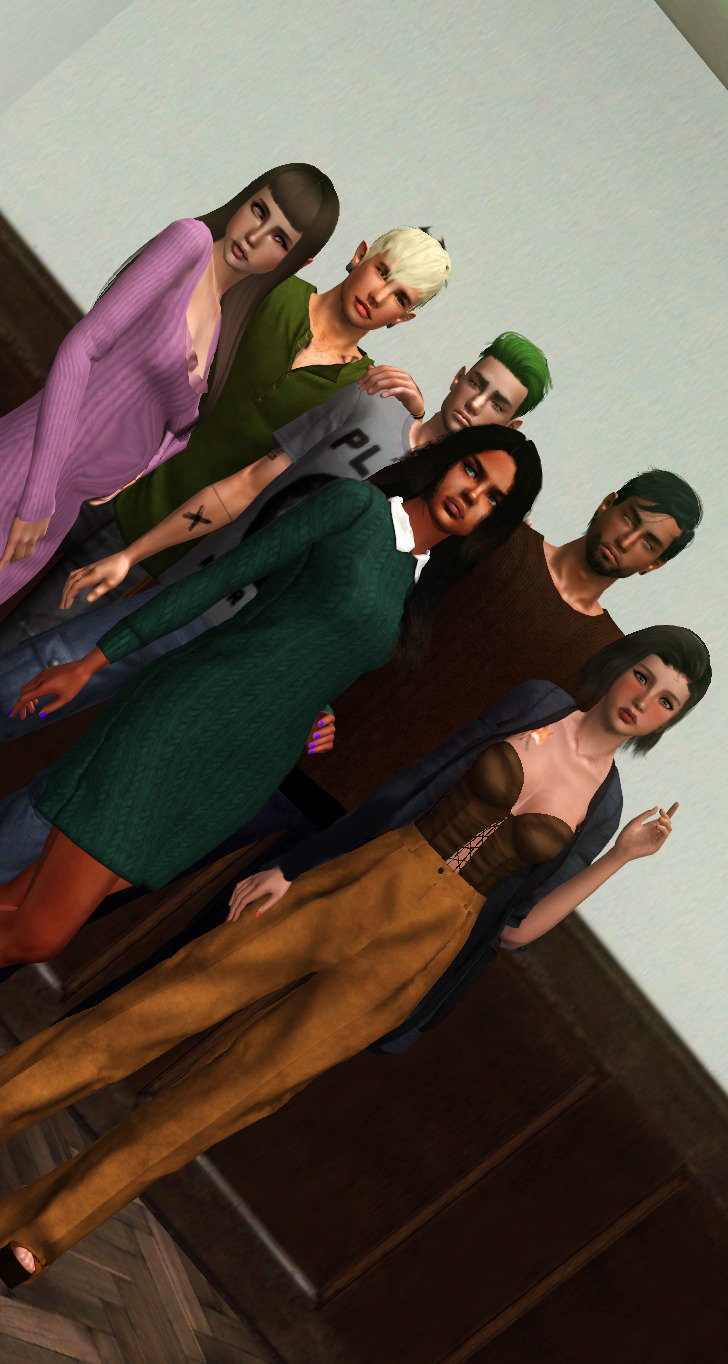
Family time ♥
@heartbreaklegacies @littlefrenchsims
#entertainingsimmer#littlefrenchsims#heartbreaklegacies#sims 3#rp#queued#mine#♥#leonardo caprelli#calipso heartbreak#leonardoxrp#branch caprelli#marie caprelli#connor caprelli#cassiopée caprelli#leonardoxcalipso
79 notes
·
View notes
Text

skin gone, lenses gone..
I had to change everything but Calipso looks young again, she doesn't want to age 🤣
#Calipso#Oc; Calipso#Heartbreak Legacies#gen 1#sims#sims 3#ts3#sims3#simblr#simumblr#the sims legacy#the sims 3 legacy#the sims#the sims 3#sims 3 legacy#sims3 legacy#legacy#ts3 legacy#ts3 simblr
17 notes
·
View notes
Photo



Lily , Leah , Ilya
Ilya and Calipso ( @calipsodiary )
Ilya and Liam ( Lealys Stern )
#oc:lily#Lily#Leah#Ilya#oc;Ilya#Calipso Heartbreak#Liam#sims#Sims 3#sims3#ts3#legacy#sims3 legacy#sims 3 legacy#ts3 legacy#oc rp
34 notes
·
View notes
Text
Pirates of the Caribbean: At World's End. Everything stays the same but this is the song that plays in every Davy Jones/Calipso scene
2 notes
·
View notes
Text
XXIII: 1923
On Irreducibile Particles, Rapid Assimilations, and Molasses Funks
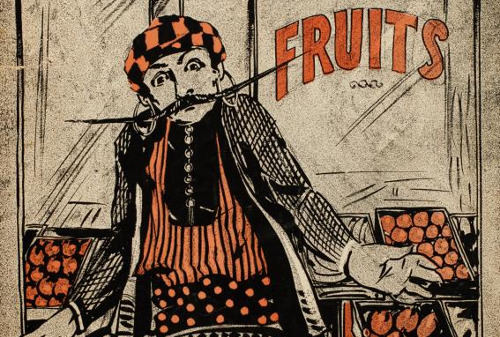
1. Billy Jones: “Yes! We Have No Bananas”
One of the four or five irreducible particles of the silliness of the Roaring Twenties, the folly of the années folles, the glitter of the Goldene Zwanziger, the keynote and image of all that was evanescent and soon to vanish, like champagne bubbles, in the era to come. A vaudeville routine sold as a Tin Pan Alley ditty, with a stop-start melody and nonsense refrain that captured a bluff, jaunty mood and lent itself to repetition, sawing relentlessly away with or without the lyrics kidding the incomplete Americanisms of the Lower East Side. But that kidding remains, a none too subtle reminder that the white majority would never consent to seeing immigrants as fully human. Nonsense in the United States is always political; perhaps that too is not unique to us.
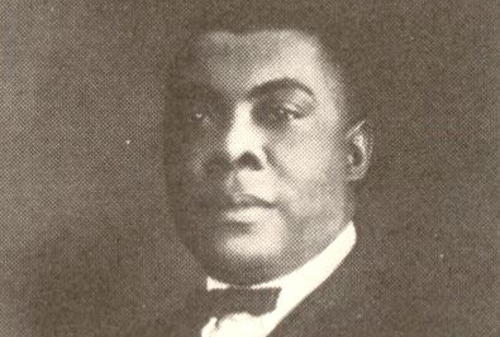
2. Clay Custer: “The Rocks”
The consensus among jazz scholars is that Clay Custer is most likely a pseudonym for the tune’s composer, but there are a few other Chicago-area pianists it could be, including his brother Hersal. Regardless, it’s the first disc on record to feature a walking bassline (so early in its development that it’s almost a stumbling one); this, combined with the previous year’s publication of “The Fives” from the same pen, is the birth of boogie-woogie piano. By decade’s end, the genre will have been fully formalized by pianists who all point to the work of Arkansas-born, New Orleans-trained, Chicago-adopted “Gut Bucket” George Washington Thomas as fundamental. Even apart from the all-important bassline, the chromatic opening trills and development of its themes—the rocks could be wave-dashed, or more euphemistic—give delight.

3. King Oliver’s Creole Jazz Band: “Dipper Mouth Blues”
Seven years is a long time in pop, which hot jazz still is. The gap between the Original Dixieland Jass Band’s first recordings and the first sides made by Joe “King” Oliver’s band—who would undoubtedly have been one of the ODJB’s primary inspirations back when New Orleans was the quarantined heart of jazz, before it spread like a virus to infect the entire nation—would have been noticeable in any era, but a comparison between the two reveals that while the white boys got the energy and the raucousness right, they missed the funk and the communal interplay. Oliver’s muted trumpet solo isn’t just virtuosity: it responds to and is responded to by the rest of the band, including the young second cornettist, recently arrived to Chicago from New Orleans.

4. Bennie Moten’s Kansas City Orchestra: “Elephant’s Wobble”
And just as the first true New Orleans jazz is waxed, so too is the first true Kansas City jazz: less molasses funky, more brightly riffed, with a hard-stomping rhythm that presages much industrialized pop to come, from Motown to techno. Bennie Moten, a nearly thirty year old pianist, composer and now bandleader who had knocked about the Missouri ragtime scene since his youth, scored his first recording date in St. Louis, with a band of Kansas City luminaries who individually hearken back to older forms, from Sousa’s drilled marches to Joplin’s ragtime of theme and recapitulation to Ossman’s savagely strummed minstrel banjo: but together, powered by the newly hot-running engine of jazz, they produce a gleeful, entirely modern sound that piledrives, lean and hungry for rhythm, into the future.
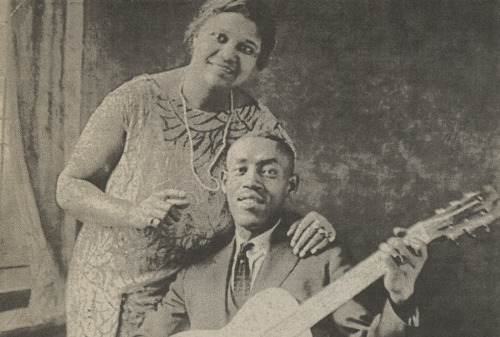
5. Sylvester Weaver: “Guitar Blues”
Most discographies will note this as the first country blues record; but Sylvester Weaver was born and reared in Louisville, Kentucky, which if it wasn’t a New York-scale metropolis was still no dirt-road waystation; nor is it the Deep South. Like most of his Black peers making their way before recording horns in the years before the electric-recording boom, Weaver was an urban entertainer—his first recordings were as an accompanist to blues singer Sara Martin. His instrument was called a “guitjo,” a banjo body strung like a guitar, and his slide technique sounds particularly otherworldly on its resonant body. The technique has appeared before, as played by Hawaiʻian musicians and white southerners; but here the sound connects (on record) to the blues, and the echoes from it will be lasting.

6. Os Oito Batutas: “Urubu”
We have heard the most prominent soloist in this supergroup before: choro composer and flautist Pixinguinha had already left his mark on Brazilian popular music in the 1910s. But when he joined seven other Black and mulatto choristas to form an eight-man group in 1919 so that a theater empresario would have an attraction in between showings of silent films, the result was a music that swung harder than traditional choro and even outpaced early samba: “Urubu” (the Guaraní word for vulture, and you can hear a wheeling, wing-fluttering flight in Pixinguinha’s flute) is just as modern, as dynamic, and as future-facing as any New Orleans jazz. In fact, musicians like Os Oito Batutas (the eight legends), demonstrate that the spirit of jazz was never exclusively a North American phenomenon.

7. Rosita Quiroga: “Sollozos”
Two legends in the field of Argentinean tango make their debut with this recording: Rosita Quiroga, the music’s first great woman singer, born in the lower-class milieu to which a cosmopolitan like Gardel only pretended; and Osvaldo Fresedo, the song’s composer, who when he begins to record in his own right will become perhaps the most emblematic tango bandleader of the decade, with a long career to follow. “Sollozos” (Sobs), with a lyric by the composer’s brother Emilio, is one of the great tango songs, uncovering the everyday pathos within the music’s slinky passion. Quiroga’s direct, unadorned vocal style refuses self-pity even as her words ask us to pity her, and the harmonium which opens the recording casts the plucked guitars which accompany her throughout in the light of eternity.

8. Carlos Gardel: “Alma porteña”
But as tango branched out into newly classed and gendered forms, Gardel the eternal cosmopolite continued to go from strength to strength. “Alma porteña” (Soul of Buenos Aires) is another of the deathless tango songs, in which the music itself is apostrophized as the cause, and cure, of all man’s ills. The mellifluous self-assurance in his baritone voice, the intricate backing of his accompanists Barbieri and Ricardo, and the swooping, tantalizing melody from Vicente Greco, who had been writing and performing tangos since the early 1910s, make a dazzling, almost overwhelming display of what I think of as Baroque tango, tango at its most self-important, self-mythologizing, and capital-r Romantic. If tango is une force qui va and Gardel is its prophet, why should we ever ask for anything more quotidian?

9. Bessie Smith: “Baby Won’t You Please Come Home Blues”
Three long years after the record companies learned that there was a market for “race” (for which see blues) records, the most famous and well compensated blues singer on the Black vaudeville circuit finally signed a contract with Columbia to cut her first records, accompanied on piano by early jazz pianist and empresario Clarence Williams, who had published (and supposedly co-wrote) this song. Its co-composer, Charles Warfield, later complained that he was cheated, which was probably true enough: music labels had much to learn from sheet-music publishers on how to screw over their talent. But the song itself is just a trifle: what makes it stick is Bessie Smith’s full-lunged performance, too self-possessed to be melodramatic about missing her lover, but too serious about her heartbreak to treat it flippantly either.

10. Ma Rainey with Lovie Austin and Her Blues Serenaders: “Barrel House Blues”
The blues singer who taught Bessie Smith to perform in public, and whose popular performances since the early 1900s in medicine shows, minstrel shows, and vaudeville had no doubt influenced white singers from Sophie Tucker to Marion Harris, also cut her first records for Paramount in 1923, at the age of forty-one. Accompanied by Chicago-based pianist and composer Lovie Austin and her hot jazz band, Rainey sings three verses that mock at Prohibition while reinforcing her own status as the elder stateswoman of the blues: the “Papa” of the song is presumably is Will Rainey, her husband, manager, and one-time partner, while “Mama” is herself, a creature of voracious appetite whose addiction to port, sport, gin, and “outside men” is a thorough rejection of a respectability that couldn’t touch her.

11. Esther Bigeou with Piron’s New Orleans Orchestra: “West Indies Blues”
Anglo-Caribbean music has not appeared in these pages since 1915, but it didn’t go unheard, nor was its influence insignificant. “West Indies Blues” was written by the great Black jazz songwriter Spencer Williams, with funning lyrics by Edgar Dowell, in the wake of Jamaican-born Pan-African Black separatist Marcus Garvey’s conviction on trumped-up charges of mail fraud: the broad dialect Esther Bigeou, a New Orleans native, uses to caricature West Indian speech is, at this remove, indistinguishable from the Coon dialects white songwriters had been putting in the mouths of US-born Blacks for generations. Even so, the sheet music was subtitled “a calipso,” and though it’s not proper Trinidadian calypso, it’s played by people who have heard it: Armand Piron’s orchestra was one of the foremost Creole bands of New Orleans.
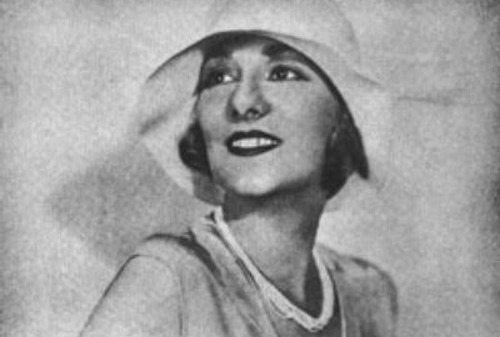
12. Marion Harris: “Who’s Sorry Now?”
As the genuine articles began to take their rightful place before the recording horn, the white women whose imitations of blues shouters had made the racist recording market safe for the blues began to move into more genteel forms of music-making, where Black women presumably couldn’t follow. (We’ll see about that.) Marion Harris, a constant presence here since 1916, has never sounded more polished and inexpressive—which is to say, whiter—than when warbling this ditty by dilettante composer Ted Snyder (who we won’t see again) and Tin Pan Alley lifers, lyricists Bert Kalmar and Harry Ruby (who we will). A song of vindictive triumph paced like a parlor ballad, it retained enough kick thirty-five years later to jumpstart the career of a teenager who sang like a grown woman.

13. Sophie Tucker: “You’ve Gotta See Mamma Ev’ry Night (Or You Can’t See Mamma At All)”
Of course, La Tucker never followed the trends for white women singers. Now in her mid-thirties, she had built too firmly on a foundation of Coon shouting to move blithely into sweet girlish Tin Pan Alley fluff: but raucous faux-blues Tin Pan Alley fluff would do just as well. “You’ve Got to see Mamma” was written by popular hack Con Conrad (empresario Billy Rose is credited on lyrics), and in general outline it’s a good imitation of contemporary Black women’s songs, slightly saucy, humorously aggressive towards a wayward lover, and firmly self-respecting. But there’s no actual blues structure or emotion to it, which makes it all the better as a cloak for the indeterminately-raced Tucker to wrap herself in: big and brassy, but ultimately respectful of show-biz and social convention.

14. Wendell Hall: “It Ain’t Gonna Rain No Mo’”
The ways in which the desiccated remains of minstrelsy were shaped and pounded into country music are a major part of the recording history of the 1920s. “Ain’t Gonna Rain” is considered a folk song (four years later, Carl Sandburg would suggest that it dates to the 1870s), but Hall, a Midwestern vaudevillian who performed under the legend “The Red-Headed Music Maker,” punches out the verses, with nonstandard vocabulary and Southern rural hokum straight out of Uncle Remus, in a minstrel-inflected screech and yowl, a sound which would migrate into the “high lonesome” style which will characterize honky-tonk. But he’s also very much of his time: his instrument was not the banjo but the ukulele, the portable if not particularly versatile instrument which gave a fizzy, irrepressible soundtrack to the 1920s.

15. Fiddlin’ John Carson: “The Old Hen Cackled and the Rooster’s Gonna Crow”
Après Eck, le deluge: country fiddlers were still major entertainers in the rural communities where they set and called the dances, and as the South urbanized, they grew into bigger stars thanks to old-time fiddling conventions. The fifty-something Carson, of Atlanta, was hot enough stuff that he was a local fixture on the new medium of radio and appeared in newsreels. A sharp-eyed Atlanta distributor cajoled Okeh’s talent scout Ralph Peer into recording him in a rare acoustic-era location recording, a makeshift studio set up in an empty Atlanta storefront. Peer wasn’t happy with the results (he’d do better later), but the record, “Old Hen” b/w “Little Old Log Cabin in the Lane” (see 1907), sold out at the next convention. No hero, as we’ll see, Carson nevertheless lasted.
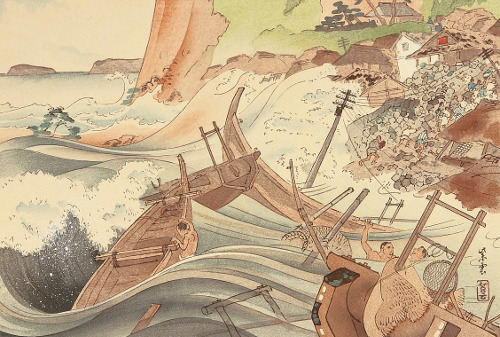
16. Asako Tanabe: “Sendo kouta”
As country music slowly pushes its way onto record, so too does the music frequently compared to it: Japanese enka, which (like country) originated in a specific milieu but has since broadened to mean any vaguely folkloric or traditional popular music. I’ve been unable to learn anything about the singer attributed here: 田辺朝子 is a common enough name that basic online searches are useless. But 船頭小唄 (often translated as “Ferryman’s Song”) was a major musical touchstone of the era, a street song which borrowed the melody of a Shinpei Nakayama composition. It became infamous in the wake of the Great Kanto Earthquake, said to have been predicted in the haunting, death-obsessed lyrics. A sentimental 1923 film of the same title inspired multiple recordings; this is the one posted to YouTube.

17. Mounira al-Madiyyah: “Asmar malak ruhi”
1923 was the first full year of nominal Egyptian independence from the British “protectorate” which had begun in 1882 and was formalized during the War to break Ottoman power. Although the British occupation would not be entirely ended until 1953, the promulgation of the first constitution and the convention of the first parliament in Cairo is worth commemorating here, with the voice of the first Muslim woman in the modern era to come to prominence as an entertainer in Egypt: before her (as throughout North Africa and the Middle East), the profession was limited to Jewish and Christian women. أسمر ملك روحي was one of her signature songs, one that has had long echoes in Egyptian light-entertainment history: “Dark King of My Soul” is one way to translate the title.

18. Mohammad el-Wahab: “Ma niish bahebbek”
Egyptian popular music was still only just being born: the September 1923 death at the age of 31 of café singer and musical-theater composer Sayed Darwish, whose melodies (some of which we will hear in future) borrowed Western structures and sometimes instrumentation in a break with classical Arabic formulas, is a useful demarcation point. Mohammad el-Wahab was a friend and close collaborator with Darwish in his last years, and would become perhaps the most important Egyptian popular musician of the twentieth century, but one. This early song, a light taqtuqa from the kind of genial musical romantic comedy which would come to form the backbone of the West and South Asian film industry, is an anti-love song performed in character as a rascal protesting (too much) that he only loves himself.

19. Marika Papagika: “Opou dis dio kyparissia”
The Anatolian Greek singer Marika Papagika was by now more or less the undisputed queen of the ex-Ottoman diaspora in New York City, despite continued challenges from Kiria Koula. Within the next year or so she would even open the first café-aman (and behind authority’s back, a speakeasy) in the Western hemisphere; but here, with her husband on cimbalom and other immigrant musicians on violin, cello, and percussion, she sings a song which takes its title from the Greek folk air “When You See Two Cypresses,” but hares off in other directions in the singing. It’s called a Zeïmpekiko (Anatolian Greek folk dance) on the label, but scholars, noting the modern fusions which New World residence has imparted to Papagika’s musical ecosystem, have called it an early example of rebetiko.
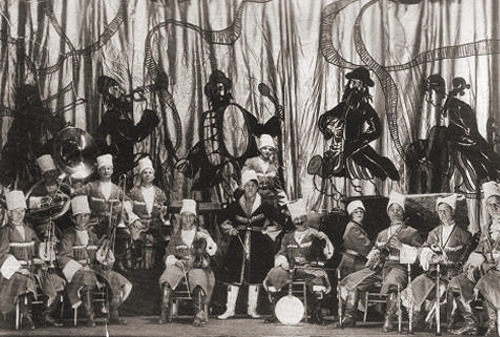
20. Naftule Brandwein’s Orchestra: “Doina and Nachspiel”
As we move further into the 1920s, the number of great recordings by the Eastern European Jewish artists who brought what we now call klezmer to the tenements of New York City will slowly decrease. Partly this is because of rapid assimilation and the inroads made by Jewish artists into mainstream US culture: the next generation of talented Jewish musicians were more likely to aspire to be Gershwin or Brice than Brandwein or Picon. But also, beginning in 1924, the country’s open (to Europeans) immigration policy was for the first time given a permanent numerical limit, heavily restricting (as it meant to) the number of new Jewish immigrants to the United States. There will be more klezmer records in future, but let this be a valediction for the first generation.

21. Isa Kremer: “Dwie Guitarre”
But there was a whole constellation of global Jewish culture which the policies set by a know-nothing Congress could not touch. Isa Kremer, the great Russian Jewish soprano, was born to bourgeois parents in what is now Moldova, but was publishing revolutionary poetry in Odessa as a teenager. She debuted as an opera singer in Italy; within a few years, she included Yiddish folk songs in her concert repertoire, supposedly the first woman to do so. The Russian Revolution left her without a home (her family had backed the moderates), and her peripatetic concert schedule brought her to the United States in 1922, where she was acclaimed by Jewish and non-Jewish audiences alike. This selection of Russian romans or “gypsy” music is illustrative of her clear voice and lively style.
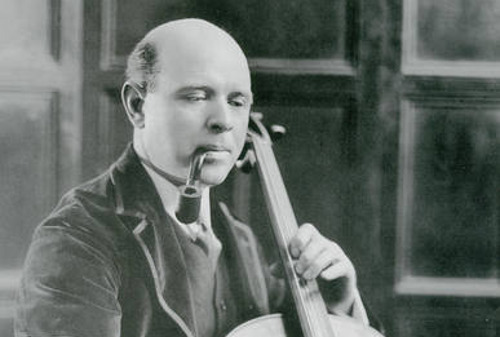
22. Pau Casals: “Kol Nidrei”
Another example of Jewish music having entered the concert canon: the German (Protestant) composer Max Bruch had composed this piece for cello and orchestra in 1880, the melody of the first section based on the Hebrew prayer recited during the evening service on Yom Kippur and that of the second on one of Isaac Nathan’s 1815 settings for Byron’s Hebrew Melodies. (Gentiles appropriating Jewish art and being reappropriated by Jews in turn has a long history.) The great Catalan cellist Pau Casals rendered it sensitively, accompanied only by Edouard Gendron on piano, for Columbia in 1923. In those years Casals was the preeminent cellist in Europe, recording in France and conducting an orchestra in Barcelona. An ardent Republican, he went into self-imposed exile when Franco came to power, and never returned.
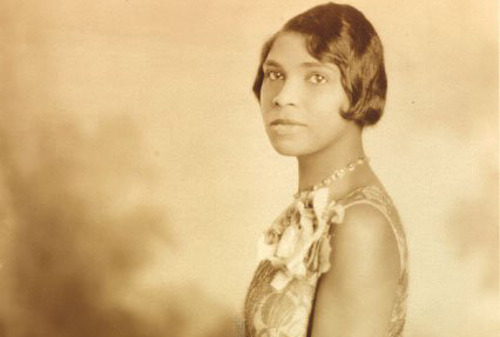
23. Marian Anderson: “Deep River”
Only two years out of high school, and still a decade out from becoming world-famous as the greatest African-American contralto of the twentieth century, Marian Anderson recorded her first sides in December of 1923. Her repertoire even then included this Harry T. Burleigh arrangement of a classic spiritual, which would become one of her signature songs. “Deep River,” with a stark simplicity of melody and lyric which contain entire implied universes of emotion and history, is one of the essential, irreducible elements of Black American art. Anderson’s early low, throbbing performance, recorded the same year that hot jazz and the blues fully came into their own on record, after some fifty years of what historians call the Nadir, an era of horrific violence and terrorism toward Black citizens, still resounds today.
5 notes
·
View notes
Text
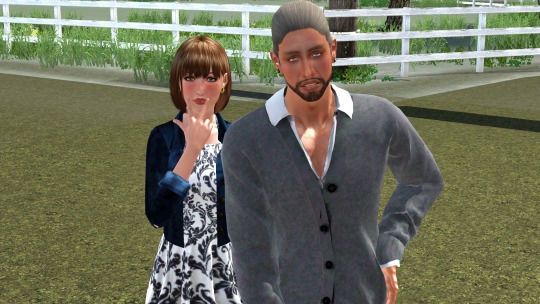
@entertainingsimmer
#Calipso#Oc; Calipso#Leonardo#Oc; Leonardo#Gen 1#Heartbreak Legacies#sims#sims 3#ts3#sims3#simblr#sims 3 legacy#ts3 legacy#legacy#simumblr#the sims legacy#the sims 3 legacy#the sims#the sims 3#sims3 legacy#North Bend#entertaininsimmer
14 notes
·
View notes
Text



Connor , Leonardo , Calipso & Cassiopée
@entertainingsimmer
#Connor#Oc; Connor#Leonardo#Oc; Leonardo#Calipso#Oc; Calipso#Cassiopée#Oc; Cassiopée#Heartbreak Legacies#gen 1#gen 2#sims#sims 3#ts3#sims3#simblr#sims 3 legacy#ts3 legacy#legacy#simumblr#entertainingsimmer#the sims legacy#the sims 3 legacy#the sims#the sims 3#sims3 legacy
19 notes
·
View notes
Text


Calipso and Leonardo have aged well but they remain one of my most beautiful couples
@entertainingsimmer
#Heartbreak Legacies#sims#Calipso#Oc; Calipso#Leonardo#Oc; Leonardo#sims 3#ts3#sims3#simblr#sims 3 legacy#ts3 legacy#legacy#simumblr#gen 1#the sims legacy#the sims 3 legacy#the sims#the sims 3#CalipsoxLeonardo#entertainingsimmer
16 notes
·
View notes
Text

#Calipso#Oc; Calipso#Cassiopée#Oc; Cassiopée#Kyle#Oc; Kyle#Heartbreak Legacy#gen 1#gen 2#gen 3#sims#sims 3#ts3#sims3#simblr#sims 3 legacy#ts3 legacy#legacy#simumblr#the sims 3#the sims 3 legacy#the sims#the sims legacy#sims3 legacy#Heartbreak Legacies
16 notes
·
View notes
Text

Calipso

#Calipso#Oc; Calipso#gen 1#Heartbreak Legacies#sims#sims 3#ts3#sims3#simblr#sims 3 legacy#ts3 legacy#legacy#simumblr#sims3 legacy#the sims 3 legacy#the sims 3#the sims#the sims legacy
14 notes
·
View notes
Text

Hey Simblr 🍀
#Calipso#Heartbreak Legacies#Gen 1#sims#sims 3#ts3#sims3#simblr#sims 3 legacy#ts3 legacy#legacy#simumblr#the sims#the sims 3#Oc; Calipso
16 notes
·
View notes
Text

#Calipso#Oc; Calipso#Heartbreak Legacies#sims#sims 3#ts3#sims3#simblr#sims 3 legacy#ts3 legacy#legacy#simumblr#calipso#the sims#the sims 3
13 notes
·
View notes
Photo


goodbye Mirth! I’m moving!

@entertainingsimmer
#calipso#Calipso Heartbreak#leonardo#Calipso&Leonardo#gen 1#simblr#simumblr#ts3#ts3 simblr#ts3 legacy#Sims 3#sims#sims3#legacy#sims3 legacy#sims 3 legacy#Calipso Diary ➡️ Heartbreak Legacies
7 notes
·
View notes
Photo


#Calipso Heartbreak#Calipso#simblr#simumblr#sims#sims 3#ts3#legacy#sims3 legacy#sims 3 legacy#ts3 legacy#Gen 1
23 notes
·
View notes
Text
Hello friends 👋🙂



#sims#sims3#sims 3#ts3#simblr#sims 3 legacy#ts3 legacy#legacy#simumblr#calipso#gen 1#sims3 legacy#calipso heartbreak#vacation#Selfie
28 notes
·
View notes
Photo







Wedding
#wedding#calipso#diary#byCalipso#Calipso Heartbreak#sims#Sims 3#sims3#sims 3 legacy#simblr#simumblr#ts3 legacy#legacy#ts3
27 notes
·
View notes